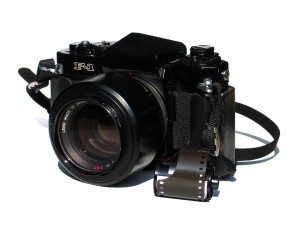
Tips For Taking Better Product Photos
 Product photos are frequently used in physical store catalogs, mail brochures, e-commerce websites, and other forms of media. They allow store owners to present their products in the most appealing manner possible, which subsequently boosts sales. However, there’s a right way and a wrong way to take photos, and unfortunately many store owners choose the latter.
Product photos are frequently used in physical store catalogs, mail brochures, e-commerce websites, and other forms of media. They allow store owners to present their products in the most appealing manner possible, which subsequently boosts sales. However, there’s a right way and a wrong way to take photos, and unfortunately many store owners choose the latter.
You can’t expect to take quality product photos without investing in a decent camera. While smartphones and webcams may suffice for personal photos, they lack the clarity and detail needed for product photos. After all, the photo is essentially what the reader/viewer will base his or her purchasing decision on. If its’ grainy and looks unprofessional, they probably won’t buy it. But if it looks clean, detailed, and professional, they may pull out their wallet and place an order.
When searching for a camera, choose a high-megapixel DSLR. These are the “de-facto” standard among professional photographers and business owners alike. And while the cost may seem somewhat high, you can usually write it off on your taxes if it’s used strictly for business purposes. Purchasing a mid-to-high end DSLR is a smart investment that will pay off in the form of better product photos for your store.
In addition to the actual camera, you should also invest in some type of graphics editing software, such as Adobe Photoshop. After taking photos of your products, you’ll want to clean them up by adjusting the lighting, removing blemishes, cropping unnecessary objects out of the frame, etc., all of which can be accomplished with Photoshop. Alternative GIMP is a free-to-download Image Manipulation Program that offers similar features of Photoshop.
Here are some more tips on how to take killer photos of your products:
- Focus strictly on the product, limiting or removing other elements from the shot.
- Don’t underestimate the impact of lighting on your product photos. Taking photos in dark or shaded areas will result in a “gloomy” look that does your product no justice.
- If you are taking photos of shirts or other garments, consider using a ghost mannequin. These special mannequins feature removable arms and appendages so the garment appears to float in the air.
- Familiarize yourself with your camera’s setting, including landscapes, close-ups, portraits, etc.
If you have any questions at all about visual merchandising, please give us a call at 800.241.6897 or email us at /contact-us/.



